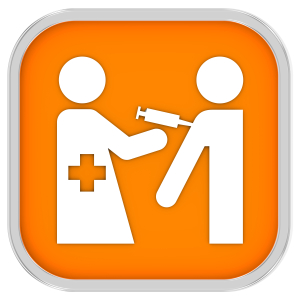By Norma Erickson
This article in it’s entirety, is compliments of www.SaneVax.org

By Norma Erickson
This article in it’s entirety, is compliments of www.SaneVax.org
A Johns Hopkins scientist has issued a blistering report on influenza vaccines in the British Medical Journal (BMJ). Peter Doshi, Ph.D., charges that although the vaccines are being pushed on the public in unprecedented numbers, they are less effective and cause more side effects than alleged by the Centers for Disease Control and Prevention (CDC). Further, says Doshi, the studies that underlie the CDC’s policy of encouraging most people to get a yearly flu shot are often low quality studies that do not substantiate the official claims.
Promoting influenza vaccines is one of the most visible and aggressive public health policies in the United States, says Doshi of the Johns Hopkins School of Medicine. Drug companies and public officials press for widespread vaccination each fall, offering vaccinations in drugstores and supermarkets. The results have been phenomenal. Only 20 years ago, 32 million doses of influenza vaccine were available in the United States on an annual basis. Today, the total has skyrocketed to 135 million doses.
“The vaccine may be less beneficial and less safe than has been claimed, and the threat of influenza seems to be overstated,” Doshi says…
I have been considering boycotting stores, as much as possible, that “wallpaper” their storefronts, and such with flu shot propaganda. Do they realize how they are hurting their customers or is it all about the mighty dollar?
THE number of people who have died in Italy after being administered a flu vaccine made by Swiss pharmaceutical company Novartis has risen to 13.
The Italian Medical Agency (AIFA) has warned against panic and stressed there is not proof yet that it was the vaccine that led to the deaths.
It said it banned two batches of the product — called FLUAD — as a precautionary measure, pending further studies…
Related Articles:
John Hopkins Scientist Reveals Shocking Report on Flu Vaccines
Novartis flu vaccine suspended in Italy after deaths
Investigation into reports of serious adverse events following use of Fluad
Italy Probes 11 Deaths in Novartis Flu Vaccine Review
Does one’s health, and even life seem to be the driving force behind these vaccines?
Has the CDC contradicted itself again? The reports are now coming out that there was an influenza outbreak on the U.S.S. Arden. Almost a quarter of those on board caught the illness even though 99% of crew members had been vaccinated against flu per mandatory military vaccine policy.
According to the report, the ship was in San Diego, CA in early February to conduct training exercises. There were 102 crew members on board. Three days into it, 25 crewmen needed medical care after coming down with influenza.
The Naval Health Research Center determined that out of the 25, 20 of them had influenza A and 18 of these specifically were the subtype H3N2.
Due to severity of the outbreak, the ill crew members were sent home with medication and instructions on how to avoid spreading the illness. The ship had to be fully disinfected…
Written By: Celeste McGovern
Two of my daughters arrived home from primary school last week with public health packages in their bags. It’s that time of year again, when nurses are out in force like army recruitment officers, waging a war on deadly germs and rounding up volunteers for vaccines.
This year in the United Kingdom the intranasal flu vaccine is being rolled out. It’s already been used in the United States where 14 to 15 million doses of AstraZeneca’s FluMist are currently in distribution for this flu season but this is the first year it is being offered under the brand name Fluenza Tetra in the UK to all children older than 24 months and it is heavily promoted by public health officials. They’ve even produced a “Flu Hero” cartoon directed at children in which a superhero gives a little boy a nasal flu vaccine which, like a bite from a radioactive spider, transforms him into a superhero himself with super defenses.
I hate the flu as much as other parents, but the public health information struck me as superficial and smacked of a sales pitch, so I decided to look a little deeper into the vaccine and here are the top half dozen reasons my children won’t be going near it…
By Norma Erickson
 Hundreds of young women in Carmen de Bolivar, Colombia ended up in hospitals since the administration of the second dose of Gardasil beginning in schools on March 20, 2014. Local newspapers report as many as 700 girls being sent to emergency rooms after receiving Gardasil over the last few months.
Hundreds of young women in Carmen de Bolivar, Colombia ended up in hospitals since the administration of the second dose of Gardasil beginning in schools on March 20, 2014. Local newspapers report as many as 700 girls being sent to emergency rooms after receiving Gardasil over the last few months.
According to a local school teacher:
The girls in Carmen de Bolivar received their first dose of Gardasil in July 2013, after which reported reactions were similar to other vaccines (redness, swelling, pain at the injection site, etc…). The second dose was administered on the 20th of March 2014. Several girls reacted immediately and much more severely, reporting dizziness, syncope, and severe headaches. By May 29th to the 30th, the situation had turned into a full-blown crisis with scores of girls being admitted to local emergency room facilities to be treated for fainting, shortness of breath, weakness in the limbs etc…
No one seems to know what instigated this epidemic number of hospital visits. Government health officials emphatically denied that Gardasil could be causing the extraordinary number of new medical conditions. Instead, they put forth theories such as lead poisoning, mass hysteria and even too much Ouija board use.
Parents of the affected girls did not agree with any of these theories. They knew the only thing that had recently changed in their daughters’ life was the administration of the second dose of the HPV vaccine, Gardasil.
Hundreds of parents took to the streets in peaceful demonstrations to demand investigations; others burned tires in protest, blocking a main road connecting a coastal town with the interior. For the first time in the history of Colombia, perhaps the world, parents launched massive public protests over the administration of a vaccine that is apparently making people sick instead of protecting them. (read more)
Parents of affected children suspected Health Minister Alejandro Gaviria of being less than truthful, being misinformed, or simply protecting special interest groups supporting the use of Gardasil and they were not shy about stating their suspicions in any public forum they could gain access to.
Health Minister Gaviria accused media representatives of contributing to the creation of an epidemic of ’mass hysteria’ and publicly requested journalists and media personnel to exercise ’more responsible journalism.’
Sunday, October 5, 2014, Alda Mera, reporter for El Pais, published an article titled, The HPV vaccine saves lives, Nubia Muñoz Calero. Reporter Alda Mera apparently thought there was no one better to allay the fears of Colombian parents than an epidemiologist who had been born, raised and educated in Colombia, who had participated in cancer research for more than 30 years and been nominated to receive a Nobel Prize for her work. This medical scientist was Dr. Nubia Muñoz Calero. (read her biography here)
Unfortunately, the article published as a result of reporter Alda Mera’s interview with Dr. Nubia Muñoz Calero continues to market HPV vaccines via fear, not facts.
Please examine the statements from Alda’s article below when compared with documented factual information:
According to Dr. Muñoz Calero, when asked if Colombia understands the importance of her discovery that HPV causes cervical cancer, the good doctor states, ”I am not the inventor of (HPV) vaccines, pharmaceutical companies developed them. I have no commercial interest in them.”
FACT: What Dr. Muñoz Calero fails to mention is that she is a member of the Merck HPV Global Advisory Board. This may not be what one would technically call a commercial interest. However, it does constitute a substantial conflict of interest when one is being portrayed as an independent scientific expert. (verify here) Why did Reporter Alda Mera not disclose this information?
According to Dr. Muñoz Calero, her contribution was to demonstrate with well-planned epidemiological studies that the human papillomavirus is the main and necessary cause of cervical cancer.
FACT: Epidemiological studies never prove causation. They cannot prove that a specific risk factor actually causes the disease being studied. Epidemiological evidence can only show that this risk factor is associated (correlated) with a higher incidence of disease in the population exposed to that risk factor. The higher the correlation the more certain the association, but an epidemiological study cannot prove causation. (verify here)
It is also important to note that papers published prior to FDA approval of Gardasil refer to HPV as being ’associated with’ the development of cervical cancer. It was only after FDA approval of Gardasil that ’scientific’ papers began to refer to human papillomavirus as being ’causally associated’ with the development of cervical cancer. This phrase soon morphed into HPV being ’the main and necessary cause’ of cervical cancer. (verify here, in Dr. Muñoz Calero’s own published paper – simply scroll through the referenced papers and look at their dates of publication.)
According to Dr. Muñoz Calero, she had helped identify the two types of HPV (human papillomavirus) responsible for 70% of cervical cancer.
FACT: What the esteemed doctor failed to mention is the fact that the two types identified may not be the prevalent types in the Colombian population. If HPV 16/18 are not the prevalent types in Colombian women, any effect Gardasil may have on the prevalence of cervical cancer in her country would diminish substantially. (verify here)
According to Dr. Muñoz Calero, when asked about the safety demonstrated during the clinical trials of Gardasil, she stated, ”As an intramuscular injection (Gardasil) produces some pain in 80% of girls, heat and redness in the arm. A small percentage have headaches and fevers, 10% for maybe one or two days. But these 40,000 women (who participated in clinical trials) did not suffer syncope, fainting, or diseases that (are) now blamed on the vaccine.
FACT: According to documentation presented to the FDA prior to Gardasil approval in the United States, 73.3% of clinical trial participants who received Gardasil reported new medical conditions after vaccine administration. It is interesting to note that 76.3% of those who received the so-called ’placebo’ also reported new medical conditions after injection. The problem here is that the ’placebo’ used was not an inert substance – it consisted of the brand new (not safety tested) proprietary aluminum adjuvant Merck developed for use in Gardasil and a ’carrier’ solution with undisclosed ingredients. The only thing these clinical trials proved was that Gardasil was no less dangerous than the adjuvant used in Gardasil. Many of the new medical conditions reported during clinical trials are the same ones being reported around the world after Gardasil administration. (verify here) (list of reported new medical conditions from clinical trials here)
According to Dr. Muñoz Calero, when asked whether Gardasil had been rushed to market, stated that the laboratories created the first human papillomavirus vaccine at the end of the 90’s, and began phase I and II clinical trials before 2000.
FACT: Merck’s development program for the HPV quadrivalent vaccine for prevention of cervical cancer was granted fast track designation in 2002. Merck initiated phase 3 clinical trials of the HPV quadrivalent vaccine in 2002. (verify here) This fast track designation was granted despite the fact that Merck’s proposed vaccine did not meet any of the criteria required for fast track approval. (verify here)
According to Dr. Muñoz Calero, when asked about the adverse reactions being reported in Colombia, says she does not know in detail what is happening in Carmen de Bolivar because she does not live in the country; but based on what she’s read and been told by colleagues….200,000 million doses have been distributed (not necessarily administered) in the world. WHO, PAHO, FDA and EMA say that Gardasil is safe and there is no scientific evidence showing (that it) triggers autoimmune diseases (Guillán-Barre syndrome, multiple sclerosis, transverse myelitis).
FACT: There may be no concrete scientific proof that HPV vaccines are triggering and/or causing the adverse events being reported in every country where they are administered. However, there is also no scientific proof that HPV vaccines are NOT causing these new medical conditions either. There is no such thing as an epidemic of coincidence.
The SaneVax team would like Dr. Muñoz Calero to explain why biologically plausible mechanisms of action that could explain new medical conditions occurring after the administration of HPV vaccines presented by scientists and medical researchers around the globe is not being investigated thoroughly by any of the alphabet organizations she mentions which all have vested interests in mass administration of one of the most expensive vaccines ever produced. (verify here and here)
Near the end of the interview, Dr. Muñoz Calero is asked if it would be a good idea to stop mass HPV vaccinations in Colombia until after investigations to determine which children are at risk for adverse reactions. She states:
No. It would be a mistake to stop the program. Countries that achieve the highest coverage are those with school-based programs. What I recommend is to increase education programs for physicians, media, and communities. Make them understand that this vaccine is the best weapon against cervical cancer.
Dr. Muñoz Calero, since when is it a mistake to apply the precautionary principle to the administration of a medical intervention of any kind?
Anyone with an ounce of compassion would be fighting to protect the continued health and well-being of the young girls in their native land; NOT fighting to preserve the uptake of a vaccine which might be responsible for epidemic numbers of health problems.
The new medical conditions occurring after Gardasil administration must be investigated thoroughly before any more young women are subjected to devastating potential risks in exchange for the highly debatable promise of a reward 20 years down the road.
The latest ’medical miracle’ can wait until after independent investigations determine it to be safe.
By the way, there is a huge difference between being ’anti-vaccine’ and supporting vaccine safety.
If a pharmaceutical company cannot market their products based on facts, they should not be allowed to market them at all!
This article in it’s entirety, is compliments of www.SaneVax.org
If you would like to view charts, and details behind the HPV vaccine then click on the link below.